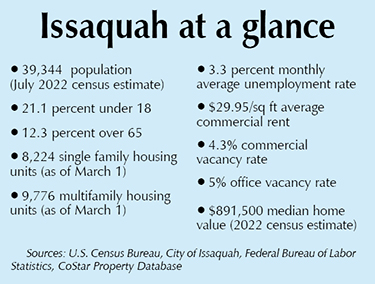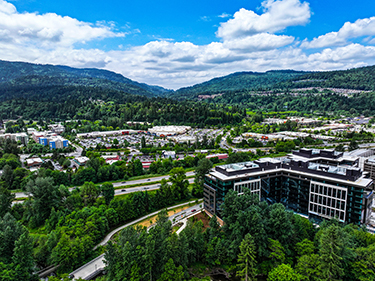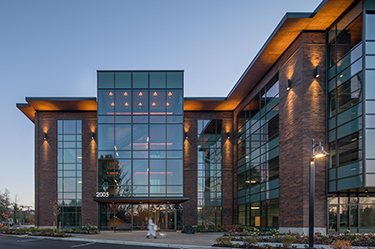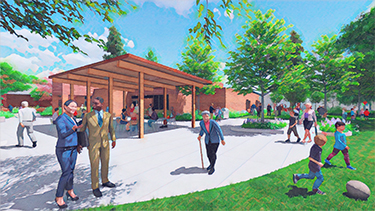|
Subscribe / Renew |
|
|
Contact Us |
|
| ► Subscribe to our Free Weekly Newsletter | |
| home | Welcome, sign in or click here to subscribe. | login |
Real Estate
| |

|
March 28, 2024
Let’s look at Issaquah
Nestled between three mountains and the southern edge of Lake Sammamish, Issaquah was once an overwhelmingly single-family bedroom community and a weekender’s recreational paradise.
Today’s Issaquah is home to several major companies including Costco and REI. Much more multifamily than single-family housing is being built here, and the city plans to draw more multifamily and mixed-use growth to its central core and elsewhere. Issaquah is attracting many young buyers, too. Its 98029 zip code is at the very top of Homebuyer’s list in terms of its share of homes bought by older millennials aged 35 to 44, just above Pleasanton, California, and Bedford, New York.
Multifamily housing outnumbers single-family homes in today’s Issaquah, and that housing is increasingly walking distance to shops and transit. As the Trailhead City becomes more urban, it’s working to concentrate growth while preserving and connecting the parks and open spaces drawing people there.
“There is a lot of excitement about the opportunity for Issaquah to build upon our assets while continuing to maintain what makes our community attractive,” said Jen Davis Hayes, the city’s economic development manager. “Where else can you take a break from work and choose between trailheads that lead to over 200 miles of trails, or head to a 500-acre state park to explore Lake Sammamish on a paddleboard or trails around a salmon-bearing stream?”
CONCENTRATING GROWTH
Issaquah’s vision to direct density to its center goes back more than a decade. The city made plans back in 2012 to develop the 1,100-acre area around its core on both sides of I-90 from strip malls and around 750 units of housing to a pedestrian urban area, concentrating housing growth there while “protecting our historic downtown, current neighborhoods and forested hillsides,” Hayes said.
The vision was to have roughly 12.5 million square feet of commercial space and up to 8,500 housing units built by 2031 in the central area.
The area has been significantly transformed since then, though not yet to the extent originally planned. In central Issaquah, there are currently 1,795 housing units and just under 8.2 million square feet of commercial space.
Central Issaquah is home to Costco, REI, Siemens, and many local businesses, and where light rail is sited — but that’s not expected to arrive for another 15 years. For now, the city is working to encourage pedestrian connections and development near its transit centers. It is also considering an additional crossing of I-90 to ease congestion and is likely going to ask the public for input on that project later this summer.
Third-generation Issaquah landowner Rowley Properties is more than 10 years into its 30-year agreement with the city to redevelop older retail and commercial buildings in its Hyla Crossing and Rowley Center neighborhoods on the south side of Interstate 90, next to 19th Avenue Northwest and Tibbetts Creek. Rowley, now led by Kari Rowley Magill, acquired 640 acres of land in Issaquah in 1954.
Work is complete on the first two phases of development in Rowley’s neighborhoods, including a Homewood Suites hotel, new streets that border it, and the 2005 Poplar mixed-use office building, home to REI, as well as the urbanization of NW Poplar Way and the addition of Formula Brewing. Rowley plans to begin the planning process for its next development project in 2025.

“We steadily progress toward realizing our shared vision of a semi-urban center with seamless access,” Rowley Magill said. “While our sights are set on constructing mixed use retail/multi-family housing, we recognize the need to navigate the economic climate over the next few years before finalizing our plans.”
Costco also added two new buildings at its 30-acre headquarters near I-90 this summer. Costco’s new nine-story Building 4 connects by skybridge to its new Building 5, a 1,694-stall garage.
DEVELOPMENT IN THE HIGHLANDS
The Issaquah Highlands, a mixed-use planned community in northeast Issaquah, is also gearing up for more growth in the coming years.
Swedish Hospital plans to expand its services on a vacant 10-acre parcel in the Highlands. Issaquah also recently entered into a development agreement with Shelter Holdings to redevelop a 21-acre vacant parcel along Ninth Avenue Northeast, including up to 325,000 square feet of commercial and retail space, and up to 1,250 residential units, to be located mostly in mixed-use, pedestrian-oriented buildings.
That agreement includes at least 200 age-restricted or assisted-living units, with 20 percent of the remaining units designated as affordable housing. Transit-oriented development near the Highlands transit center, trails, and pedestrian connections are also included — as is 35,000 square feet of community recreation, like water features, sports courts, climbing walls, adaptive playground equipment and outdoor fitness equipment.
“The city’s appeal lies not just in its commercial offerings but in (its) unique blend of work and play.” Hayes said. “Businesses and developers share sustainability as a value and bring their innovative methods to ensure Issaquah remains a place where everyone can enjoy the outdoors.”
A FOCUS ON SUSTAINABILITY
Speaking of sustainability, the Trailhead City was certified LEED Gold in May, the first city in Washington to achieve the certification.
Issaquah is also one of five Eastside cities that entered a formal partnership about a year ago to leverage their separate small sustainability offices into a larger body with pooled resources. The Eastside Climate Partnership will help the cities accelerate efforts to meet their greenhouse gas emissions targets, and a recent survey of Issaquah residents showed that’s of high importance to them, said Issaquah Sustainability Manager Stacy Vynne McKinstry.
“Community members want to engage in environmental action,” Vynne McKinstry said. “They want to know what the city is doing to make progress on climate, and they really want the city to lead by example.”
Among other efforts, the climate partnership educates owners and property managers on state building energy efficiency standards, and runs a heat pump installation program, and a home electrification program.
Despite Issaquah’s increasing density, Vynne McKinstry said reducing single-car commutes is still a focus area. Her office is involved in regional discussions to try to improve access to transit, seeking out opportunities to promote more teleworking, and working with big employers to reduce their employee single-car drivers.
Issaquah updated its land use plan last year to include a LEED certification requirement for new buildings over 10,000 square feet or more than 10 units, but Vynne McKinstry said the city hasn’t had any new major projects come in since its approval. She said the city is ready to support building owners and developers to build more sustainably.
“There’s a lot of access to resources for building owners, developers, really to make sure that we’re building the most sustainable buildings, or updating our buildings, so it’s kind of an exciting time where there’s the support to make those green decisions,” she said.
CONNECTING PUBLIC SPACES
With 60 trailheads and more than 1,300 acres of open space within a half mile’s walk for 90 percent of Issaquah residents, it should be easy to get into nature in Issaquah. But many of its local parks need upgrades, and the city can do more to strengthen connections between them — and with Issaquah’s larger surrounding natural areas, Parks Director Jeff Watling said.
“We’ve got a well-positioned park system that is ready to do an even better job in unifying all of that,” Watling said. “What we heard from the community is Issaquah’s parks and open spaces really are important to livability in this town, but also they are a little tired.”
A $3.2 million park upgrade is in the works at Pedestrian Park and Senior Center Plaza in Olde Town at East Sunset Way and Front Street. That project, designed by Mithun, aims to increase walkable connections between the park, senior center, and the train depot, and create common spaces for people to gather, which will also help support Olde Town businesses.
The city is in the midst of an upgrade to its 2018 Parks Strategic Plan which centers on a need for connectivity between neighborhoods and between Issaquah and the public lands around it. That includes making parks and open spaces more accessible to residents where streams, slopes and the freeway make them hard to get to.
“It can’t just magically happen but (we are looking for) opportunities to make investments one bite at the time to build upon and accomplish a vision like that,” Watling said. “So much of Issaquah’s identity is really found in the land.”
In our new Local Look column, DJC reporter Shawna Gamache explores cities and neighborhoods around Cascadia. Where should she look next? Send ideas to shawna.gamache@djc.com.
Related Stories:
- Eastside cities partner for climate action 03-28-2024
- Costco Headquarters Addition 03-25-2024
- Costco pays nearly $62M for Issaquah offices 03-18-2024
- City of Issaquah is LEED Gold certified 07-25-2023
- REI claims Rowley's new boutique office building in Issaquah 02-26-2021





